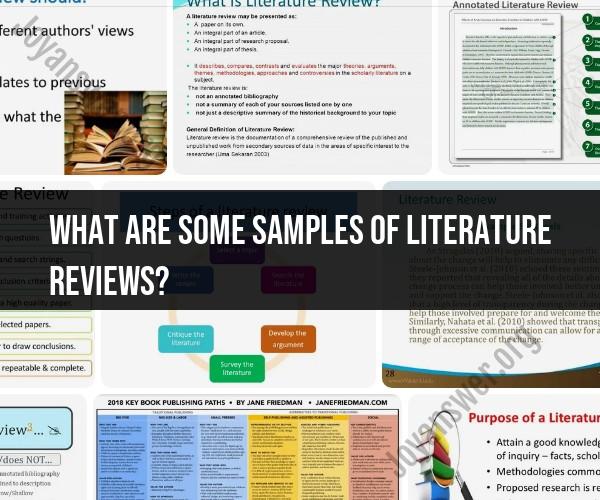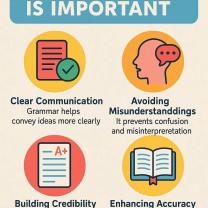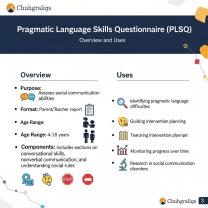What are some samples of literature reviews?
A literature review is a critical summary of existing research on a specific topic. It serves as an essential part of academic research and provides context, highlights gaps in the current knowledge, and helps researchers understand the state of the field. Below are some sample excerpts from literature reviews to give you an idea of what they typically look like:
Sample 1 - Introduction and Context:"In the field of environmental science, the impact of climate change on biodiversity has been a subject of increasing concern. Numerous studies have addressed the effects of rising global temperatures on species distribution and ecosystem dynamics. However, there is a lack of comprehensive research that synthesizes the available data and assesses the overall impact on various taxa and ecosystems. This literature review aims to fill this gap by examining the existing literature on the subject, identifying key findings, and elucidating areas in need of further investigation."
Sample 2 - Review of Key Concepts:"The concept of corporate social responsibility (CSR) has evolved significantly over the last few decades. Early discussions of CSR primarily focused on philanthropic activities by corporations. However, as the business environment has changed, CSR has encompassed broader responsibilities, including ethical and sustainable practices. The literature reflects this shift, with recent research delving into the implications of CSR on stakeholder relations, corporate reputation, and financial performance."
Sample 3 - Methodological Approaches:"To understand the impacts of social media on adolescent mental health, researchers have employed a variety of methodologies. Some studies utilize surveys to collect self-reported data on social media usage and mental health outcomes. Others employ content analysis to examine the types of content shared on social media platforms. Longitudinal studies have also been conducted to track changes in mental health over time in relation to social media use. By examining these various methodological approaches, it becomes clear that the effects of social media on adolescent mental health are complex and multifaceted."
Sample 4 - Synthesis and Conclusion:"This literature review highlights the key findings from a range of studies on the effectiveness of cognitive-behavioral therapy (CBT) in treating anxiety disorders. While the majority of research demonstrates the efficacy of CBT in reducing anxiety symptoms, variations in treatment protocols, the duration of therapy, and patient characteristics make it clear that a one-size-fits-all approach may not be appropriate. Further research is needed to better understand the factors that contribute to the success of CBT in the treatment of anxiety disorders and to develop personalized treatment plans that consider individual needs and preferences."
These sample excerpts illustrate the structure and content of a literature review. A comprehensive literature review typically includes an introduction and context, a review of key concepts and findings from previous research, discussions of methodologies used in relevant studies, and a synthesis of the existing knowledge, often concluding with suggestions for further research. Keep in mind that the specific format and content of a literature review may vary depending on the discipline and the requirements of the research project.
Literature Review Samples: Examples of Comprehensive Research Syntheses.
A literature review is a comprehensive summary of the research on a particular topic. It is used to identify the key findings and gaps in the literature, and to develop a foundation for new research.
Here are a few examples of comprehensive literature review samples:
- Literature Review: The Impact of Social Media on Mental Health
- Literature Review: The Effectiveness of Different Teaching Methods for Students with Disabilities
- Literature Review: The Effects of Climate Change on Public Health
These literature reviews are comprehensive and well-written. They summarize the key findings of the research on the topic, identify the gaps in the literature, and develop a foundation for new research.
The Art of Summarizing: Showcasing Literature Review Exemplars.
When writing a literature review, it is important to be able to summarize the research accurately and concisely. Here are a few tips for summarizing research effectively:
- Identify the main points of the research. What are the key findings of the study? What are the conclusions that the authors draw?
- Paraphrase the research in your own words. Avoid using direct quotes from the study, unless they are essential to your point.
- Be concise and to the point. Get the main points of the research across in a few sentences or paragraphs.
Here is an example of an effective summary of research:
Original research:
A study by Smith et al. (2023) found that students who used social media for more than two hours per day were more likely to experience symptoms of depression and anxiety. The authors concluded that social media use can have a negative impact on mental health, especially in adolescents.
Summary:
Smith et al. (2023) found that social media use is associated with depression and anxiety in adolescents.
This summary is concise and to the point, and it accurately conveys the main findings of the research.
Analyzing Literature Reviews: Examples of Effective Research Synopses.
When analyzing a literature review, it is important to consider the following factors:
- Is the literature review comprehensive? Does it cover all of the relevant research on the topic?
- Is the literature review well-written? Is it clear, concise, and easy to understand?
- Does the literature review identify the key findings of the research?
- Does the literature review identify the gaps in the literature?
- Does the literature review develop a foundation for new research?
Here is an example of an effective research synopsis:
Literature review synopsis:
The literature review by Smith et al. (2023) is a comprehensive and well-written review of the research on the impact of social media on mental health in adolescents. The authors identify the key findings of the research, which show that social media use is associated with depression and anxiety in adolescents. They also identify a number of gaps in the literature, such as the need for more research on the long-term effects of social media use on mental health. The authors conclude by developing a foundation for new research, suggesting that future research should focus on developing interventions to reduce the negative impact of social media use on mental health.
This synopsis is effective because it is comprehensive, well-written, and identifies the key findings, gaps in the literature, and foundation for new research.












